Did you ever walk into a room and feel immediately serene, tidy, and deep peace? Likely, that environment was filled with aspects of Japanese domestic style. Much criticized as simply “minimalist,” the style is really a richly textured tapestry of cultural tenets, historical references, and an intense love of nature. But is it really all about less is more, or is there a subtle complexity that goes largely unnoticed? Let’s take a closer look at the nature of this intriguing aesthetic.
In a progressively cluttered and chaotic world, the pull of a serene and functional living area has never been stronger. Japanese house design is a strong antidote to modern stresses, providing not only a beautiful setting but an untroubled way of life. From the mythical sliding doors to the emphasis on natural materials, every aspect of this design tradition is intention-driven, ensuring harmony and balance. But how do you apply these ancient principles to your contemporary home without it resembling a museum? We’ll find out just that.
Unpacking the Underlying Principles of Japanese Home Style
The appeal of Japanese home style lies in its underlying philosophy, which is far greater than visual appeal. It’s about creating a place of residence that encourages wellness, supports overall health, and respects the outdoors.
Simplicity, Serenity, and Space: The Pillars of Japanese Design
When we talk about Japanese home style, we are drawn automatically to clean lines and uncluttered appearance. It’s not just about tidiness; it’s a deliberate decision based on philosophies like Wabi-Sabi (acceptance of imperfection and transience) and Ma (emphasis on emptiness and space).
- Wabi-Sabi in Your Home: It isn’t about perfection, but the beauty of imperfection, impermanence, and incompleteness. Think of a gorgeous weathered wood beam, a much-loved handcrafted ceramic bowl that has a minor flaw, or the changing light through a paper screen. How do you see the beauty in the ordinary wear and tear on your belongings as part of their history?
- The Power of Ma: Japanese design employs Ma as the deliberate use of unoccupied space. It’s more about what’s missing than about what is. This “negative space” allows objects to have space to breathe, highlights critical details, and suggests openness and serenity. Consider how removing one item of furniture might alter the atmosphere of your living room.
Natural Connection: Bringing the Outside In
One of the most unique aspects of Japanese house design is how deeply it respects nature. This has nothing to do with keeping plants in the home (though they are revered!). It is about bringing natural elements, vistas, and light into the very framework of the house.
- Natural Materials: Wood, bamboo, paper, and stone are the most common. Not only do they bring warmth and texture, but they also link the residents to nature through tactile experience. Think about walking on a cool tatami mat or running your hand over the smooth grain of a hinoki cypress tub.
- Light and Air Flow: Large windows, sliding doors (e.g., shoji screens), and open floor designs are used to provide ample light and ideal air flow. The purpose is to create a vibrant exchange between the exterior and interior, without any lines. How often do you really leave your home open to the elements?
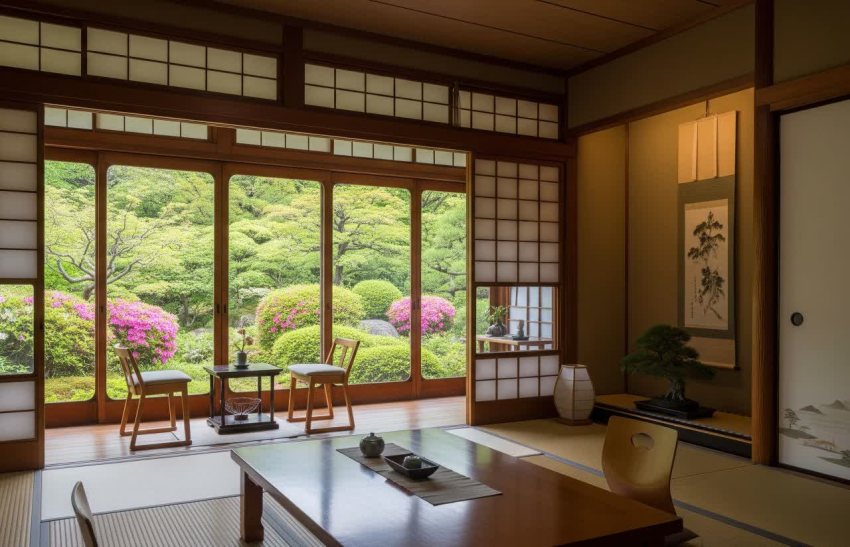
Key Elements of a Japanese Home Style Interior
To successfully understand Japanese home style, it is essential to understand the specific factors that contribute to its distinctive aesthetic and practical allure.
Furniture and Design: Low, Lean, and Intentional
Whereas Western homes are filled with large, imposing furniture, Japanese home style prefers low-profile, minimalist furniture that generates open space and circulation.
- Low Seating: Think about zabuton cushions as opposed to tatami mats, low tables (chabudai), and platform beds. This encourages a closeness to the ground and cultivates a sense of groundedness.
- Multi-functional Spaces: A room in a typical Japanese dwelling is multi-functional. A living area may serve as a sleeping area at night, thanks to futons that can be pushed aside. This is the definition of good design.
- Minimalist furniture: Each piece of furniture is chosen for its purpose and aesthetic value, with no clutter. This is reflective of the “less is more” philosophy, encouraging sensible usage.
Materials and Textures: A Symphony of Naturals
Touch in a Japanese-style house is very important, with strong emphasis on natural, airy materials.
- Wood: Wood is central to it all, from stunning floors to exposed beams and exquisitely crafted furnishings. Different woods, like cypress, cedar, and bamboo, are used for various applications, each with its own unique character.
- Paper (Washi): Used in shoji screens and fusuma doors, washi paper diffuses light in a charming way, creating a subtle, ethereal atmosphere. It also allows for ventilation while being used as an offering of seclusion.
- Tatami Mats: Classic in Japanese residential architecture, these woven rush mats are a soft, warm floor covering, absorb moisture, and give off a strong, sweet scent. They also define space sizes as traditional Japanese architecture is often tatami mat size dependent. (For more minimalist sanctuary design, see our article on minimalist interior design inspiration and ideas).
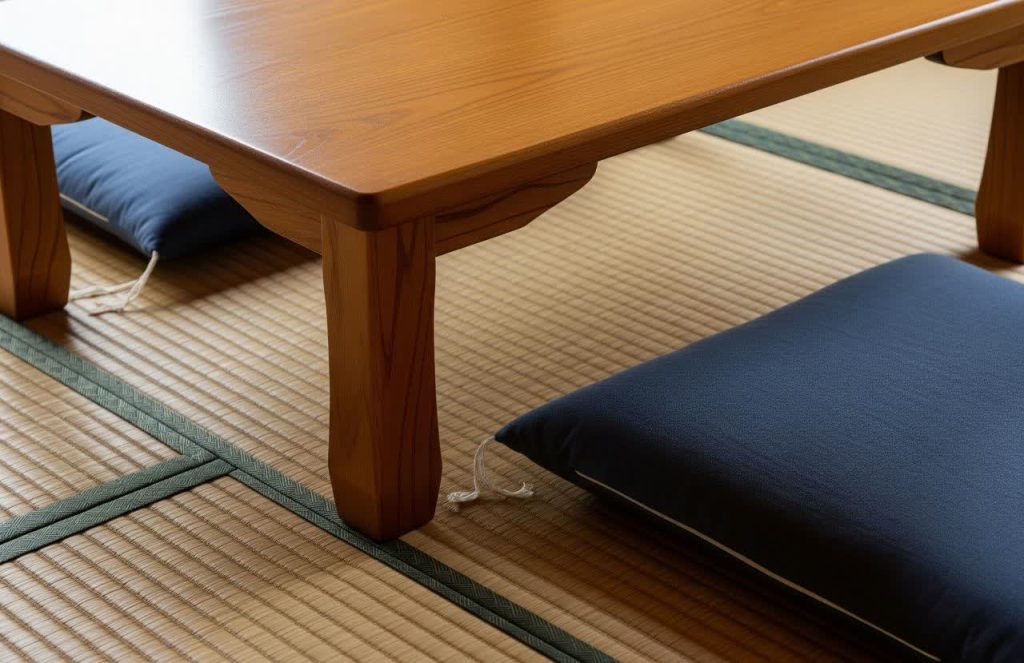
Lighting: Embracing Natural Illumination
Japanese home style lighting is all about harvesting natural light and creating a soft, diffused glow when artificial lighting is necessary.
- Large Windows and Openings: To allow as much natural light in as possible, often surrounding gardens or inner courtyards.
- Shoji Screens: Paper screens acting as diffusers of natural light, softening intense sunlight and throwing gentle, inviting glow. They also allow for room arrangements to be freely changed.
- Gentle Artificial Lighting: Artificial lighting is warm and diffused if necessary, usually employed with paper lanterns or minimalist fixtures that simulate natural light. Harsh or unacceptably bright lighting is also avoided.
Modern Japanese Home Style: Synthesizing Tradition with Modern Living
The Japanese home style’s aesthetics are timeless, yet they continuously evolve. Modern Japanese home style weaves its traditional form together with contemporary needs and advances to prove that functionality can co-exist with beauty in any era.
Minimalism Meets Modernity
Modern Japanese home architecture often takes the minimalist aspect of traditional design to new heights, with clean lines, vacant space, and no clutter. But it’s cozy minimalism, not cold.
- Sleek Silhouettes: Furniture is sleeked out, often with concealed storage to keep it tidy.
- Natural Accents in Monochromatic Color Schemes: Neutrals (whites, grays, beiges) form the basis, and warmth through natural wood tones, plants, and soft surfaces.
- Technology Integration (Beneath the Surface): The latest convenience features are incorporated discreetly, with no clutter. Think of smart home technologies hidden from sight, out of mind.
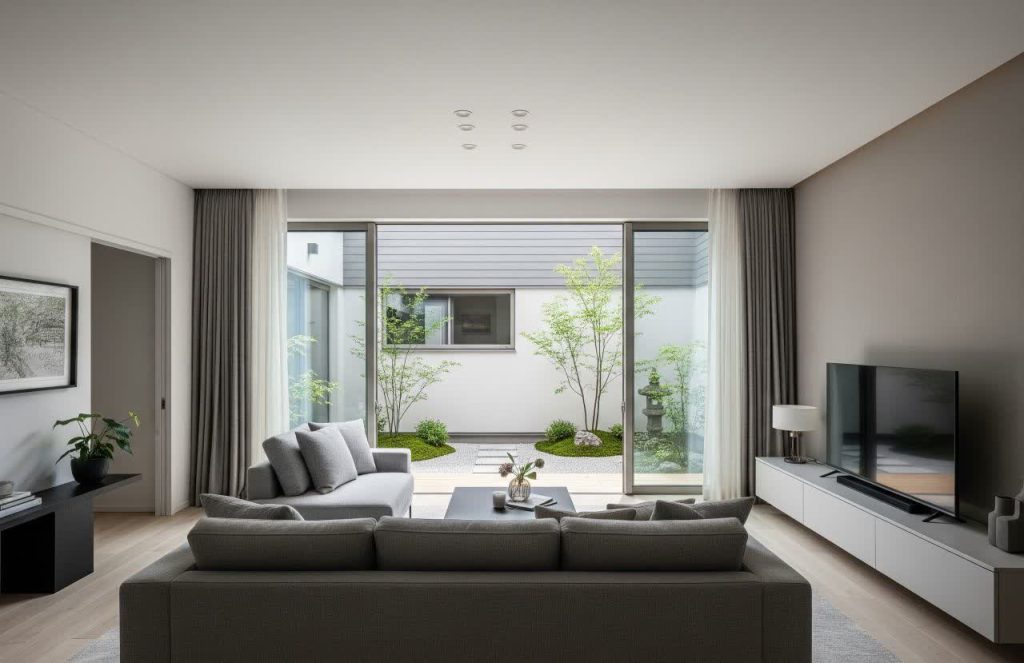
Bringing Zen to Your Living Room: Practical Tips
If you’re motivated to add some Japanese home style to your living room, here are some steps to follow:
- Ruthlessly Declutter: This is the first and foremost step. Accept that every item in your space has to serve a purpose or bring joy. If it does not, accept releasing it.
- Welcome Natural Materials: Bring wood, bamboo, and natural fibers into your space through furniture, floors, and fabrics.
- Low-Profile Decor: Utilize lower sofas, tables, and shelving units to create a feeling of openness.
- Sliding Screens or Doors: If renovations are not feasible, include shoji-inspired screens or even see-through, flowing drapes that reflect their light quality.
- Being with Nature: Incorporate potted plants (bonsai, orchids, or simply greenery), if possible, have a tiny water feature, and ensure your windows overlook pleasant views.
- Considerate Lighting: Use warm, soft illumination. Layer different sources of lighting to create atmosphere.
- Accept Imperfection: Do not try to achieve sterile perfection. Get used to the beauty of hand-made things and the imperfections that tell a story.
The Role of Art and Decor in Japanese Home Style
Japanese home style is all about simplicity and not a lack of decor. Rather, art and decor are chosen with consideration and deliberation.
- Quality Over Quantity: A single good, well-made piece of pottery, a good placement of ikebana (flower arrangement), or a rolled-up, framed calligraphic scroll can be enough to say it all.
- Seasonal Elements: Decor will tend to reflect the seasons with the energy of nature reflected inside.
- Handmade Pieces: These are highly valued for their uniqueness and human touch. Purchase local or find items with heritage.
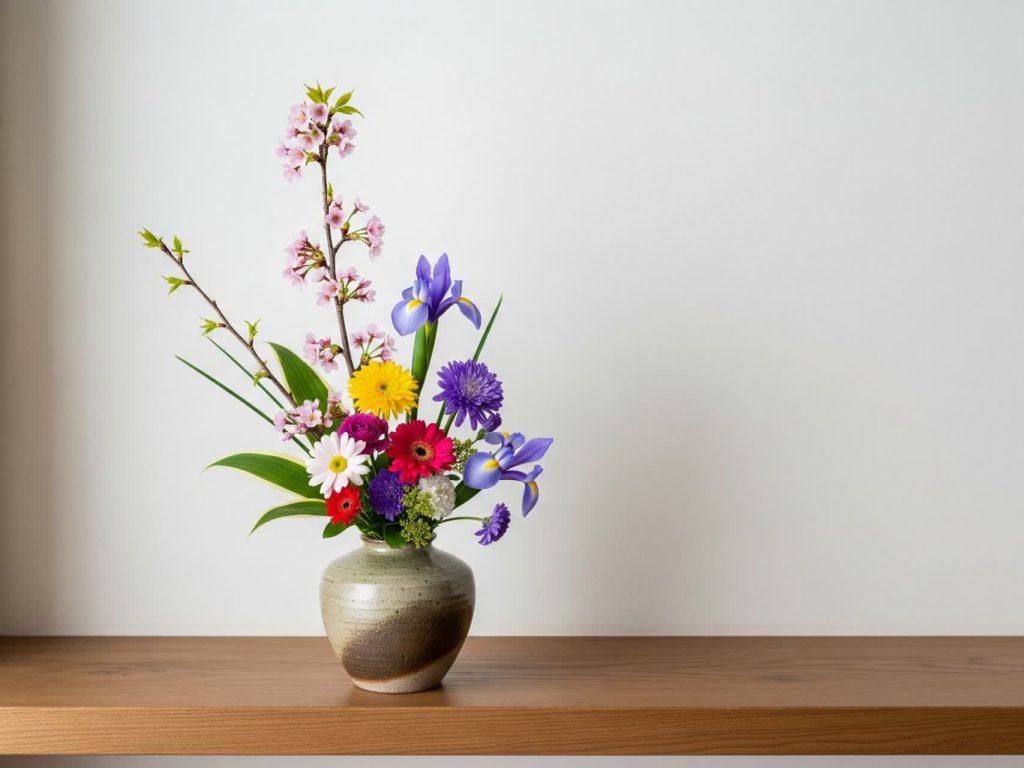
Expanding Your Understanding: Japanese Home Style Beyond the Basics
To get the most out of the depth of Japanese home style, it’s worth exploring its nuances and how it differs from, or compares to, other styles.
Japanese Home Style vs. Modern Interior Design Trends
While other contemporary trends head toward maximalism or eclecticism (for contrast, search for our post on maximalist interior design), Japanese home style remains true to its principles of simplicity and balance. It is an antidote to the urge to accumulate and display. It asks the question: “What do you actually need to live well?”
- Function Over Form: Everything has a purpose. There’s a deliberate avoidance of purely aesthetic objects that do not serve the overall peace or usefulness of the house.
- Longevity and Durability: Investing in quality, durable material and timeless designs is less wasteful and creates a more sustainable, long-lasting house. (For interesting history on durable design, research Victorian style houses and permanence.).
- Sustainability by Nature: Using natural, recyclable materials and prioritizing integration with nature inherently makes Japanese house style an eco-friendly choice. This regard for resources is native to the Japanese culture.
More Than Good Looks: The Lifestyle Factor
It’s more than redecorating your home; it’s learning a mindset. It encourages:
- Mindfulness: Being in your space, savoring the details, and serene in minimalism.
- Order and Discipline: Maintaining a clean space is an ongoing struggle and disciplined approach to what you bring into your home.
- Connection with Self: By removing distractions, a Japanese-style home can be a place for contemplation and personal growth. It keeps you centered on what matters.
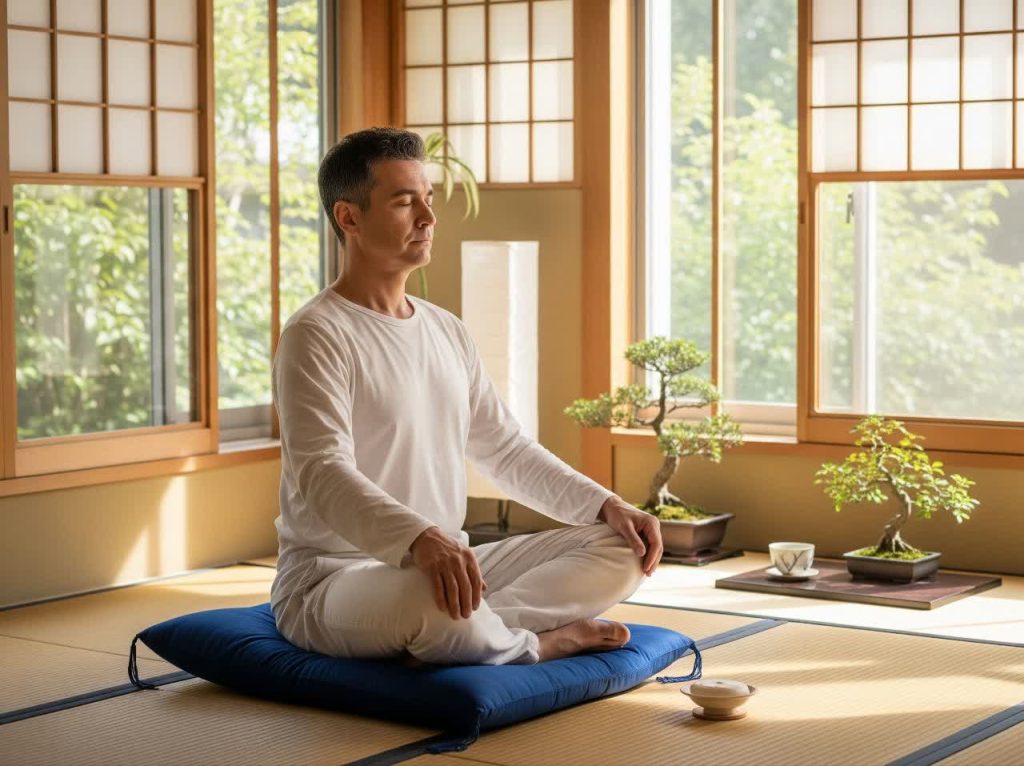
Summary: Your Guide to an Integrated Japanese Home Style
The journey to a Japanese home style interior is not one of strict adherence to rules, but of learning and applying basic principles. It’s one of embracing silence in simplicity, respecting nature, and creating a home that nourishes your soul. With natural materials, thoughtful designs, and a thoughtful approach to what you bring into your home, you are able to create your living area as a tranquil refuge.
It’s an invitation to slow down, look around, and foster a greater appreciation of the beauty in everyday life. What does Japanese home style most appeal to you?
FAQ: Your Questions About Japanese Home Style Answered
What is Japanese home style referred to as?
The more generic term is simply “Japanese interior design” or “Japanese house style.” But there are many philosophies and aesthetics that underlie it, such as Wabi-Sabi (appreciation of imperfection), Ma (utilization of negative space), and Shibui (subtle, restrained beauty).
What is Japanese home style?
Japanese style homes are characterized by their strong connection with nature, the employment of natural materials (primarily wood, bamboo, and paper), open-space floor plans, emphasis on natural light, and minimalist approach to furnishings that emphasizes functionality and flow. Traditional elements like shoji screens, fusuma doors, and tatami mats are common.
What is the name of traditional Japanese style?
Old Japanese style may be referred to as “Wafu” (和風), or “Japanese style.” It consists of traditional architectural elements, interior design principles, and garden design shaped through centuries under influential domination by Zen Buddhism and Shintoism.
What is Japanese interior design style?
You could call it “Japanese interior design style,” “Japanese home style,” or simply “Japanese style.” When speaking of the philosophical origins, however, terms like Wabi-Sabi (beauty of imperfection) and Ma (deliberate use of empty space) occur when discussing key aspects of the style.
Don’t forget to leave your comments below! What is your favorite aspect of Japanese home style?
Want to know more about other design philosophies? More articles on serenihouse.com!
